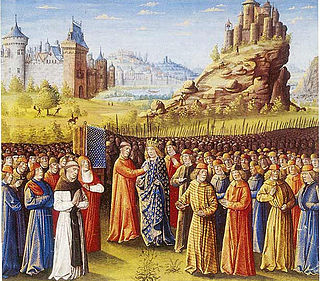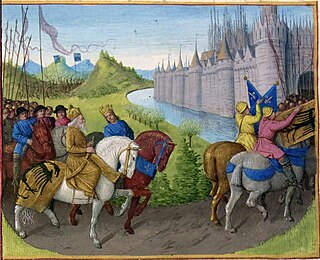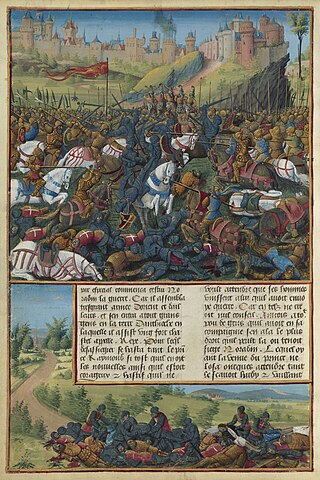Year 1142 (MCXLII) was a common year starting on Thursday of the Julian calendar.
The 1140s was a decade of the Julian Calendar which began on January 1, 1140, and ended on December 31, 1149.

Year 1146 (MCXLVI) was a common year starting on Tuesday of the Julian calendar.

Year 1147 (MCXLVII) was a common year starting on Wednesday of the Julian calendar.

Year 1152 (MCLII) was a leap year starting on Tuesday of the Julian calendar.

Year 1187 (MCLXXXVII) was a common year starting on Thursday of the Julian calendar.
The 1180s was a decade of the Julian Calendar which began on January 1, 1180, and ended on December 31, 1189.

Year 1180 (MCLXXX) was a leap year starting on Tuesday of the Julian calendar.

Year 1176 (MCLXXVI) was a leap year starting on Thursday of the Julian calendar, the 1176th year of the Common Era (CE) and Anno Domini (AD) designations, the 176th year of the 2nd millennium, the 76th year of 12th century, and the 7th year of the 1170s decade.

Year 1169 (MCLXIX) was a common year starting on Wednesday of the Julian calendar.

Year 1137 (MCXXXVII) was a common year starting on Friday of the Julian calendar.

Year 1149 (MCXLIX) was a common year starting on Saturday of the Julian calendar.

Year 1182 (MCLXXXII) was a common year starting on Friday of the Julian calendar.

The Second Crusade (1145–1149) was the second major crusade launched from Europe. The Second Crusade was started in response to the fall of the County of Edessa in 1144 to the forces of Zengi. The county had been founded during the First Crusade (1096–1099) by King Baldwin I of Jerusalem in 1098. While it was the first Crusader state to be founded, it was also the first to fall.

Baldwin III was King of Jerusalem from 1143 to 1163. He was the eldest son of Melisende and Fulk of Jerusalem. He became king while still a child, and was at first overshadowed by his mother Melisende, whom he eventually defeated in a civil war. During his reign Jerusalem became more closely allied with the Byzantine Empire, and the Second Crusade tried and failed to conquer Damascus. Baldwin captured the important Egyptian fortress of Ascalon, but also had to deal with the increasing power of Nur ad-Din in Syria. He died childless and was succeeded by his brother Amalric.

The siege of Damascus took place between 24 and 28 July 1148, during the Second Crusade. It ended in a crusader defeat and led to the disintegration of the crusade. The two main Christian forces that marched to the Holy Land in response to Pope Eugene III and Bernard of Clairvaux's call for the Second Crusade were led by Louis VII of France and Conrad III of Germany. Both faced disastrous marches across Anatolia in the months that followed, with most of their armies being destroyed. The original focus of the crusade was Edessa (Urfa), but in Jerusalem, the preferred target of King Baldwin III and the Knights Templar was Damascus. At the Council of Acre, magnates from France, Germany, and the Kingdom of Jerusalem decided to divert the crusade to Damascus.

The second Battle of Dorylaeum took place near Dorylaeum in October 1147, during the Second Crusade. It was not a single clash but consisted of a series of encounters over a number of days. The German crusader forces of Conrad III were defeated by the Seljuk Turks led by Sultan Mesud I.

The Council of Acre met at Palmarea, near Acre, a major city of the crusader Kingdom of Jerusalem, on 24 June 1148. The Haute Cour of Jerusalem met with recently arrived crusaders from Europe, to decide on the best target for the crusade. The Second Crusade had been called after the fall of Edessa to Zengi in 1144. In 1147, armies led by Conrad III of Germany and Louis VII of France began their separate journeys to the east. Conrad arrived at Acre in April 1148, and Louis marched south from Antioch.

The Battle of Mount Cadmus took place near Laodicea, at Honaz, on January 6, 1148, during the Second Crusade. The French crusader army, led by Louis VII of France, was defeated by the Seljuks of Rum.
Elinand, also known as Elinard, was prince of Galilee from 1143 or 1144 to around 1149. His parentage is unknown. He succeeded William I of Bures who either had died, or been forced into exile. Elinand was one of the main supporters of Melisende of Jerusalem. Mu'in ad-Din Unur, the ruler of Damascus, bribed him during the siege of Damascus in 1148, according to gossips spreading in the crusaders' camp.















